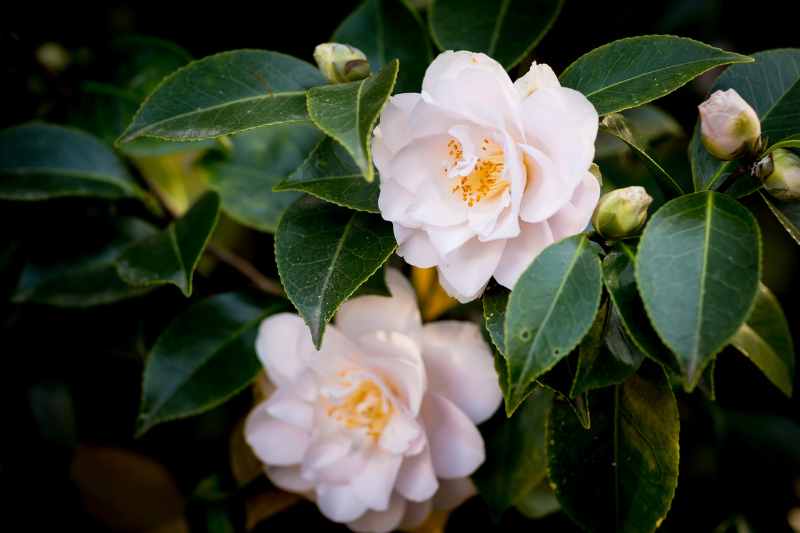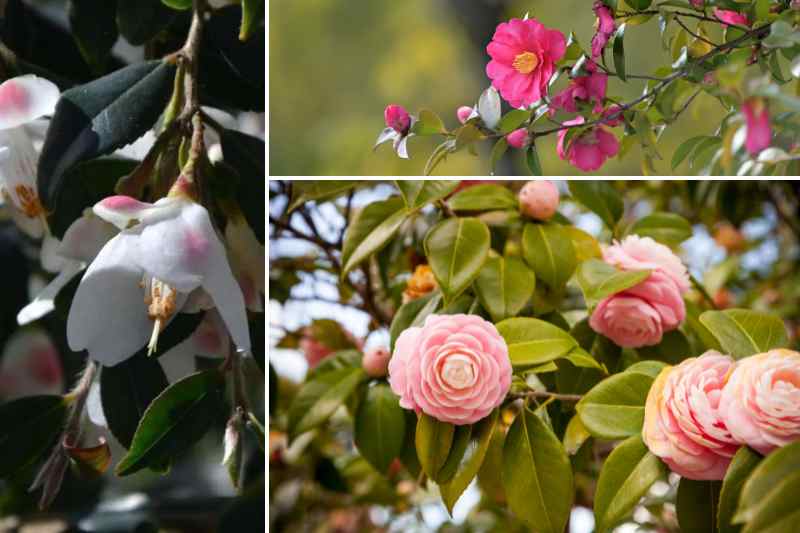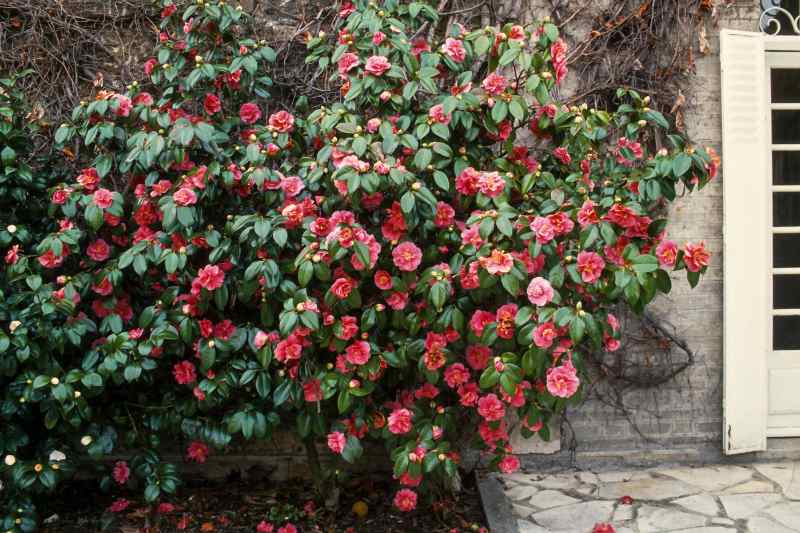Want to add a touch of elegance to your garden by planting a camellia? This tutorial explains how to do it, from soil preparation to planting, and essential care for a brilliant flowering. Camellia is an ornamental bush valued for its magnificent flowers that brighten gardens from early winter to spring. Native to Asia, several species and varieties of camellias exist, each with its own cultivation requirements.
For everything about camellia cultivation, read our full guide Camellias: planting, pruning and care.

Many different camellias
However, they can be grouped into three main categories. Camellias are distinguished mainly by their flowering periods, sizes and flower colours. Understanding these differences will help you choose the camellia best suited to your garden.
Camellia japonica
The Camellia japonica is renowned for its large, spectacular flowers that appear in winter and early spring. Its flowers, which can be single, semi-double or double, offer a palette of colours ranging from white to red via pink. Camellia japonica prefers a shaded position and an acidophilous, well-drained soil.
Camellia sasanqua
The Camellia sasanqua or autumn camellia is hardier and offers an autumn flowering. Its flowers, generally smaller than those of Camellia japonica, are often single and sometimes emit a slight fragrance. Colours vary from white to pink, and some varieties have bicoloured flowers. Camellia sasanqua is also more tolerant of sun and can be grown as a hedge or in a pot.
Wild camellias
Wild camellias are frequently (but not always — example: Camellia transnokoensis) the result of cross-breeding between different species of camellias. They are characterised by rapid growth and abundant, continuous flowering from early autumn until late winter. Wild camellia flowers are smaller and single, giving a more natural, wild aspect. They can be planted in beds, hedges or pots.

When to plant a camellia?
Best time to plant a camellia is autumn (September to November) or early spring (March–April), when temperatures are moderate.
In autumn, soil is still warm after summer, which favours root growth. In addition, autumn rainfall ensures good soil moisture, reducing need for watering. Roots will have all winter to develop and be ready to support active growth in spring.
In spring, temperatures begin to warm and risk of frost has passed. This gives camellia a whole season to establish before next winter. However, it is important to monitor watering, as spring can sometimes be dry.
Where to plant a camellia?
As a rule, camellias prefer a semi-shaded position, sheltered from cold, drying winds. They appreciate an acidophilous, well-drained soil rich in humus. Avoid calcareous soils, which cause chlorosis.
Nevertheless, autumn camellia (Camellia sasanqua) can be planted where it receives more direct light, but it is better to protect it from midday sun, especially in regions with hot summers. Wild camellias prefer a semi-shaded position but can also tolerate more sun. They also like an acidophilous, well-drained soil rich in organic matter, but their robustness allows them to adapt to slightly less ideal soil conditions (tending towards neutral soil).

Tools required
- Spade or digging fork
- Small 3-tooth claw (short handle)
- Pruning shear, clean and sharp
- Watering can
How to plant your camellia?
- Soil preparation: before planting your camellia, prepare the soil well. Loosen soil to about 50 cm depth. This allows roots to develop easily.
- Planting hole: dig a hole twice as wide and deep as the root ball of your camellia.
- Plant preparation: soak the pot in a bucket of water for two hours. Remove the plant from its pot and check the roots. Loosen the root ball to free the roots and trim any damaged roots.
- Positioning: gently place the root ball into the hole. Ensure the plant collar (the base of the stem) is level with the soil. This prevents water accumulating around the stem, which could cause rot. Fill the hole with the excavated soil (enriched with a little compost or leaf mould if available). Firm the soil lightly around the root ball.
- Watering: water generously after planting. A thorough watering helps settle soil around the roots and provides the moisture necessary to help the plant establish.
- Mulching: apply a layer of organic mulch around the base of your camellia. Mulch such as wood chips, pine needles or shredded leaves helps retain soil moisture, regulate temperature and reduce weeds.
And in a pot? To plant a camellia in a pot, choose a pot 40–50 cm in diameter with drainage holes to avoid excess water. Use a special potting compost for acidophilous plants. Place a layer of gravel or clay balls at the bottom of the pot to improve drainage. Plant the camellia ensuring the collar is level with the compost. Water generously and add an organic mulch to retain moisture. Place the pot in a semi-shaded spot, sheltered from strong winds.
































Comments